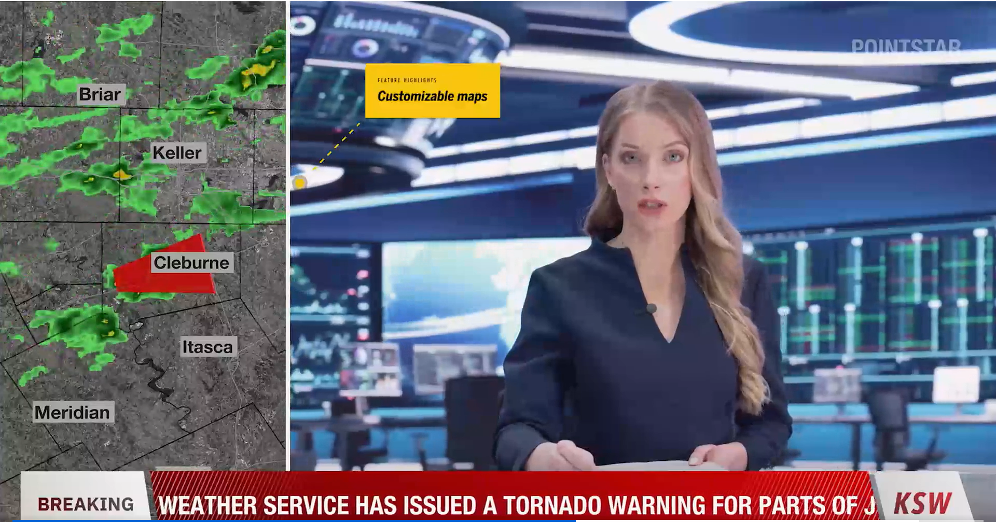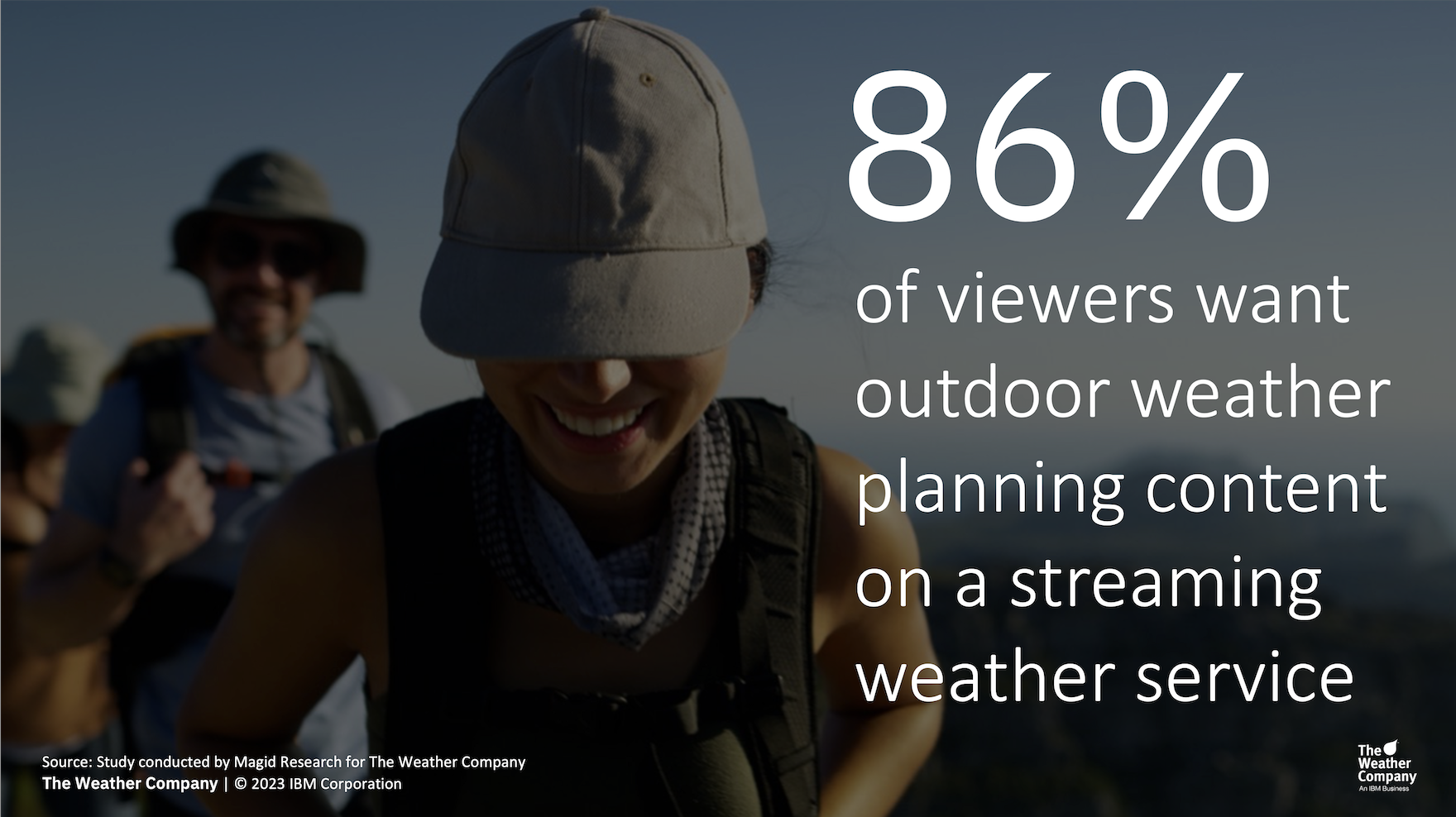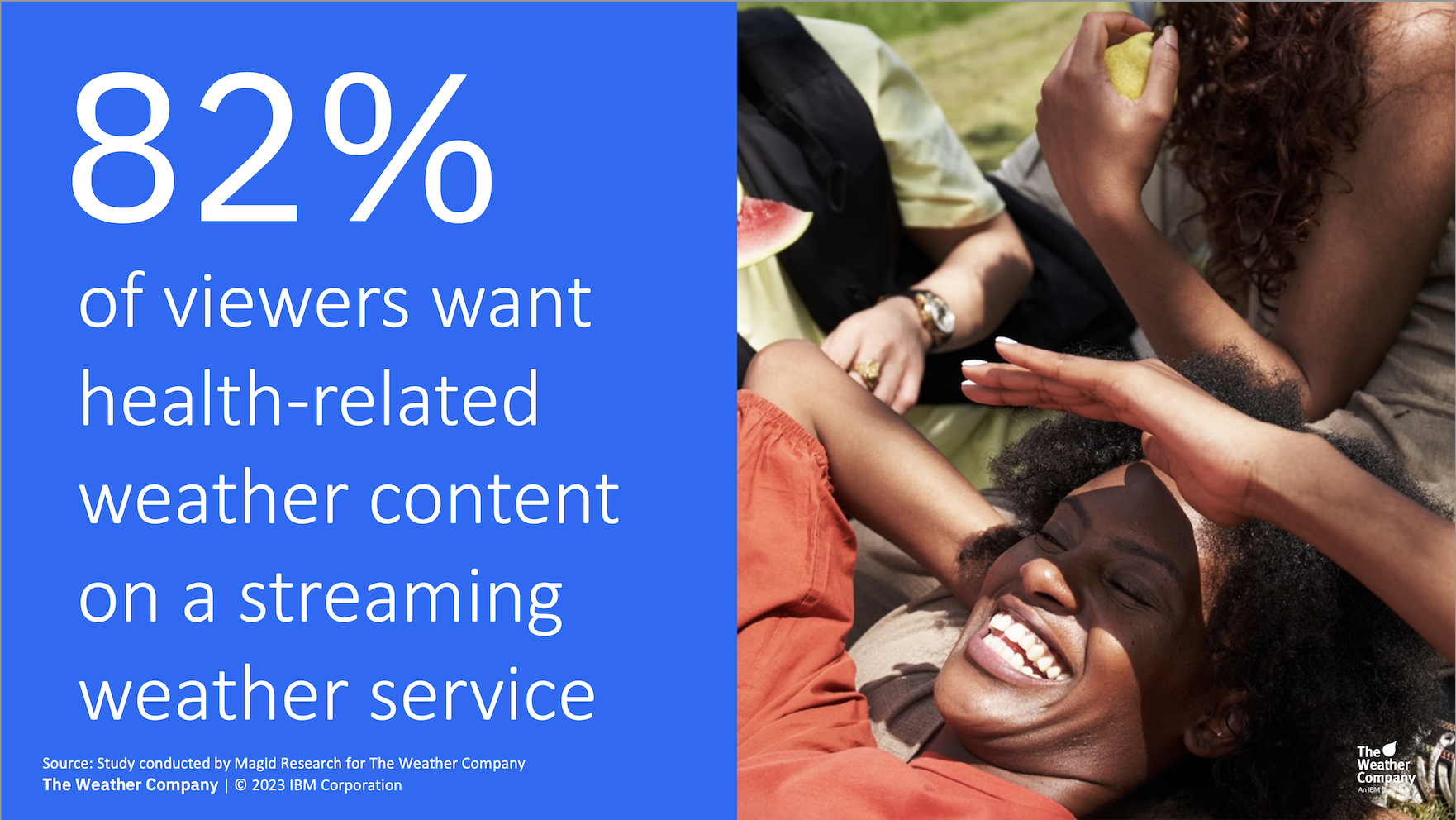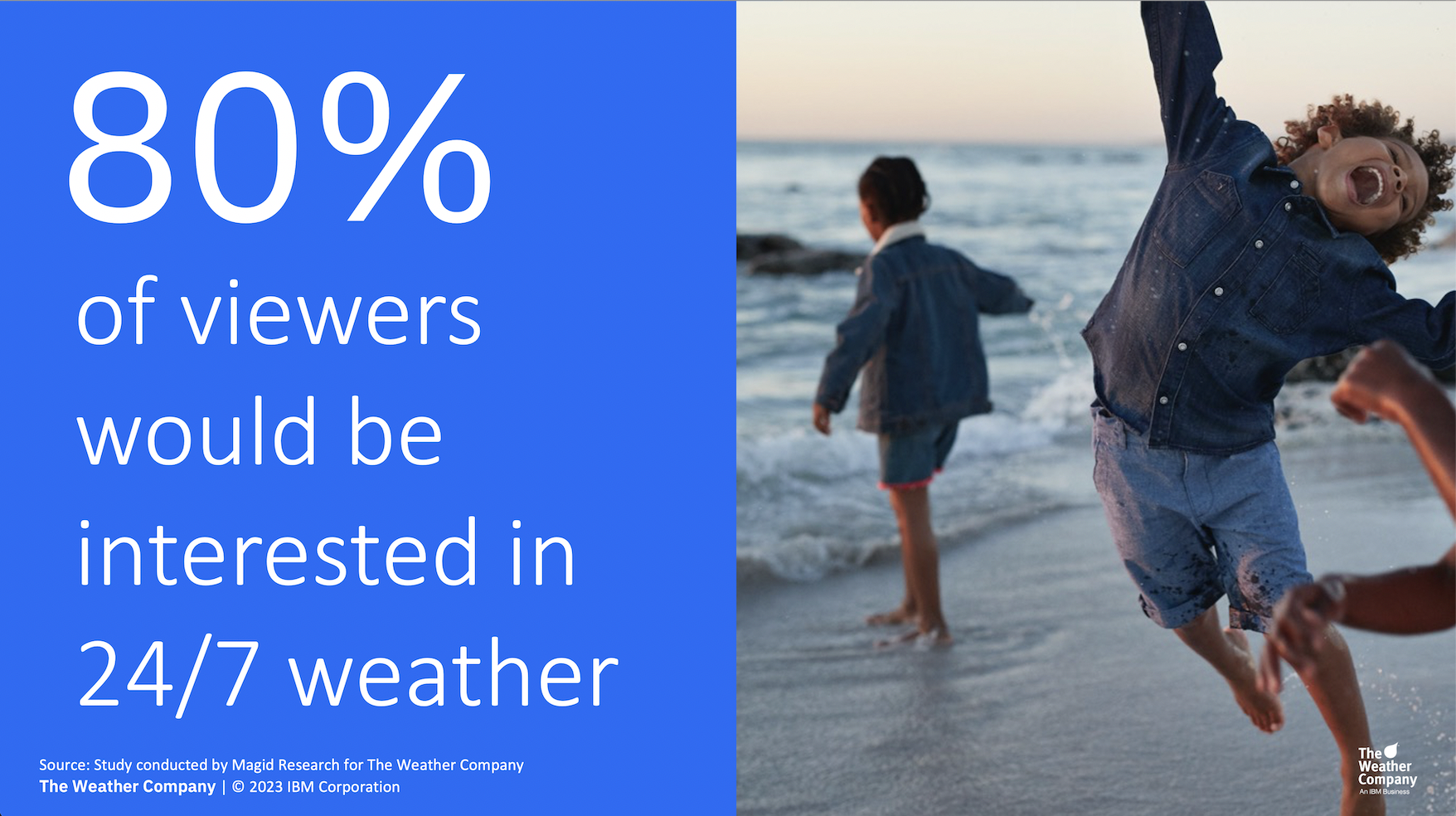
Why an alerting strategy will help win customers in a multi-platform world

Anyone who has received a tornado warning from their phone or TV knows full well the vital role local stations play in alerting communities about impending weather threats. Lives are often literally at stake in these moments, but increasingly, the challenge for broadcasters lies in getting this pertinent information to their audience no matter where they are.
“You can’t assume your audience is just sitting in one place,” said Ethan Dreilinger, Client Solutions Engineer for The Weather Company, an IBM Business. “We’re all mobile, we’re all transient.”
Stations need a multi-platform strategy that enables them to quickly send alerts to many different devices, Dreilinger explained, but in an increasingly competitive media landscape, they can’t stop there. They need an alerting strategy that expands their relationship with viewers, keeping them informed about how weather, traffic and other things will affect their lives on any given day and at any given moment.
Speaking with NewsCheckMedia Co-Founder Kathy Haley during a webinar presented by TVNewsCheck and The Weather Company, Dreilinger explained how a comprehensive cross-platform alerting strategy is key to audience engagement in the current news landscape. The good news: Weather, which ranks at the top of reasons people tune into local TV, can serve as the leading edge of such a strategy.
A Weather-Forward Alerting Strategy
“Weather is the original influencer,” Dreilinger said. “It drives decisions that we make every single day,” he said. “Are you going to go outside or not? Are you going to wear a mask if you do? Are you going to ride your bike? But it also goes beyond that, into your lifestyle. It goes into the clothes you pick out in the morning to wear; the purchases you make during the day and the way you go out to make those purchases.”
All of that adds up to a lot of new content creation and the need for technology to lighten the load.
“The one thing I have not heard any station, station group or network tell me is they’re going to start hiring hundreds of more people to create more content like alerts and start to fill those gaps,” said Dreilinger. The answer, he added, “is automation that gives you the ability to spread the message further, faster and efficiently.”
To help stations adapt, The Weather Company recently unveiled Max Alert Live, an automated, cross-platform alerting solution for weather and other kinds of information. Unlike the alerting platforms stations have been using for decades, Max Alert
Live is part of The Weather Company’s Max Ecosystem, the most widely used weather graphics platform in the media industry.
Automation and an Expanding Content Strategy
This means that meteorologists don’t have to leave one platform and log into another when it’s time to send an alert, saving precious seconds in an emergency. It also means that alerts feature the same, rich graphics that viewers see during weather reports on TV, a plus in a hotly competitive market for consumer attention.
The system has also beefed-up capabilities that ensure consumers are getting the information they need to make daily life decisions wherever they live, with automated alerts that can also be customized manually by a meteorologist knowledgeable about their local market.
Dreilinger, who lives in New York City, observed that the weather he experiences in the five boroughs is always going to be at least a little different than what residents on the easternmost tips of Long Island will get. Even though all those consumers might be placed into a single New York market, providing weather data for everyone in the area based on Manhattan conditions won’t cut it.

Alerting & Consumer Loyalty
“We need that differentiation,” Dreilinger said. “Be hyperlocal and relevant. It’s about making those alerts meaningful to the end user and delivering them to the people when they need them.”
Such a thoughtful approach with spot-on weather forecasts for specific audiences within a larger demographic will create a sense in the consumer that the newsgroup delivering the data knows them well and even understands them. Perhaps they’ll be more apt to think, “This is where I’m going to go for my information,” Dreilinger said.
The automated features of Max Alert Live will also help meteorologists get the important, nuanced information to consumers before anyone else, positioning them as “first in the market,” Dreilinger said, and do so “while the meteorologist is working on the graphics and maps and the way the story is told.”
The system allows meteorologists and producers to develop additional niche forecasts. Viewers will know when the best time of the day is to walk their dogs and what it’s like at the beach or the ballpark. Creating these lifestyle-focused alerts can only keep the audience engaged more deeply. Dreilinger snuck in that traffic alerts and other third-party data like election results will be available soon, too.
“It’s a data feed,” he added about that upcoming feature. “The nice thing about it is it will carry your on-air look.”
Synergy Across Platforms
Max Alert Live’s cross-platform alerts can also be delivered as push notifications. This gives news teams the ability to engage with the audience and point them toward additional content. “You’re really able to create that synergy across your platforms,” Dreilinger continued. “Wherever your viewers are you want to get them that information, but you also want to do it in a way that sustains your station brand and identity in the market. That’s what we’ve been able to do.”
Max Alert Live is also what Dreilinger described as a “hybrid solution,” in that it can work partly in the cloud and partly on premise. “It gives the engineers the satisfaction of something tangible, that they can see, identify and work with,” Dreilinger said. “Cloud can get a little nebulous sometimes and is a little bit of a different skill set.”

Weather, 24/7
For the marketing team, they’ll like that Max solutions help extend their spend and understand the ROI a bit better. “You now have that presence across all of your platforms with the people that your viewers are used to seeing,” Dreilinger said. “And now you’re reaching some new people.”
The Weather Company recently hired Magid to conduct research focusing on not just consumers but also advertisers.
How important is weather to consumers? According to Magid’s findings, 80% of viewers would be interested in 24/7 weather, 82% want health-related weather content on a streaming weather service and 86% of viewers want outdoor weather planning content on a streaming weather service. Max helps meteorologists and producers fill that need, quickly, accurately and with style.
And of course, advertisers want to go where the consumers are, so it makes sense Magid found that 98% of advertisers would consider sponsoring a 24/7 local streaming weather service. They’re particularly interested in streaming weather because they believe it will “deliver a large audience,” all day, every day. They believe this because they understand, Magid reported, that “weather content is engaging, and it would make ads more engaging.” With weather on CTV, advertisers also trust that they can target specific viewer groups.
Expanding Revenue Opportunities
Dreilinger said that news publishers who might consider an investment in a system like Max — which won’t cost nearly as much as the new personnel an organization would had to have brought on board to do similarly scaled work in the past — should consider: “What’s going to work in my market and what can we accomplish?”
The possibilities are growing as the technology develops. Dreilinger closed with a hypothetical, one that could very easily be realized at any given time — and one that a newsgroup would be in perfect position to capitalize on.
“The sales guys may say, ‘The local airport wants to sponsor weather, and they want to do a travel forecast for us and they want to do it at these times, but we’re not on air then,’” Dreilinger said. But any executive or content producer that’s iterated their use of Max could respond: “That’s great! We have automation that helps with that and we can deliver for that ad opportunity.”
Enhanced alerts at the speed of news today, generating bigger revenue streams at a far less monetary cost than that associated with hiring new content production teams. That’s the Max value proposition. Not bad.
































Comments (1)
LunwenHelp says:
September 26, 2023 at 5:11 am
An online course typically spans from a few weeks to several months, with corresponding assignments at each stage, including assignments, discussions, papers, and more. We not only offer comprehensive online course http://www.meeloun.com/ assistance but also provide individual task writing services for online courses. We help you successfully complete various assignments throughout the course and ensure that these assignments yield satisfactory grades, ultimately assisting you in improving your GPA!